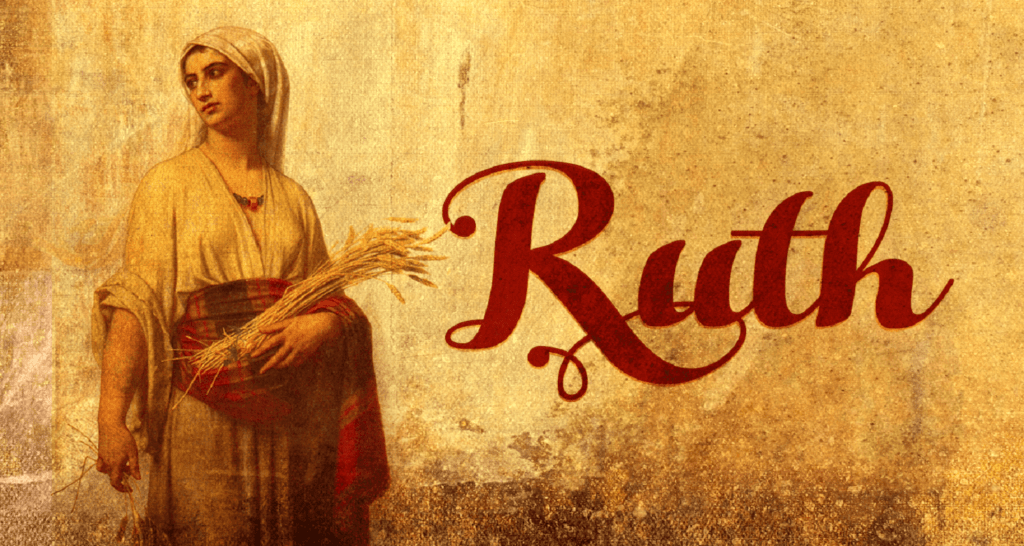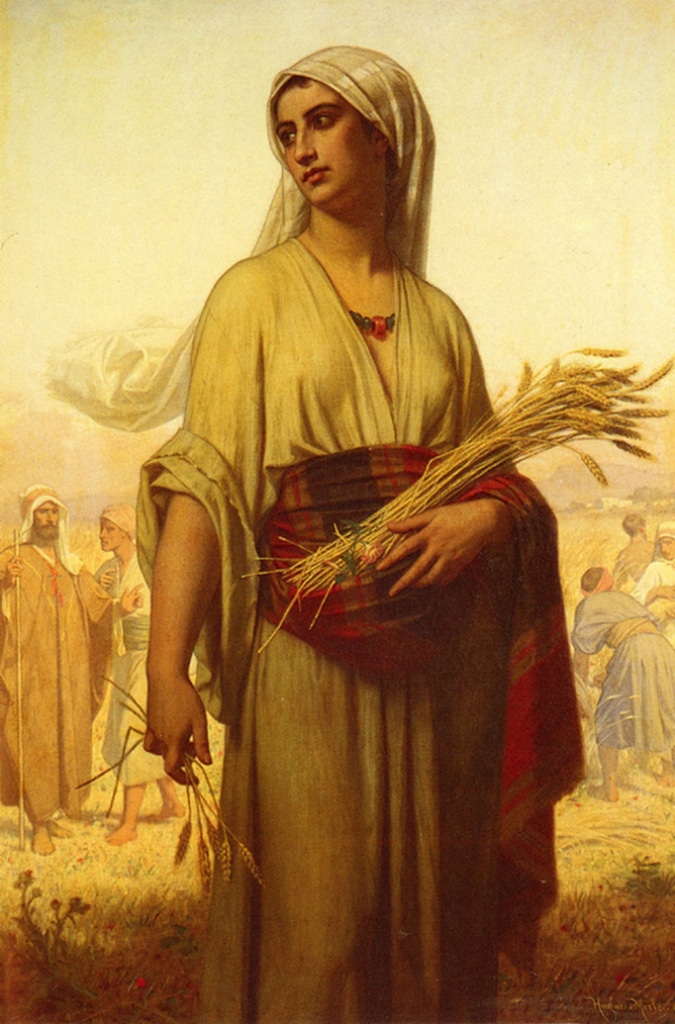Have you ever wondered about the background of figures from ancient stories, perhaps even searching for someone like 'Ruth Lee nationality' to learn more about their roots? It's a very natural thing to do, wanting to understand where someone comes from. So, when we talk about Ruth, the person from the ancient texts, her identity and origins are, well, quite fascinating. This story, you see, comes from a time long, long ago, and it touches on big ideas about who we are and where we belong.
The tale of Ruth, as told in the Hebrew Bible, is actually a powerful narrative that helps us think about belonging, even when it seems like someone is an outsider. It’s a story that Adele Berlin, for instance, argues illuminates a main theme of the Hebrew Bible: the continuity of God’s people in their land. This isn't just about a birth certificate; it's about deeper connections and choices.
This article will explore the rich layers of Ruth's identity, moving beyond a simple definition of "nationality" to really grasp what her story tells us about allegiance, community, and finding a place. We will look at her journey, her pivotal decisions, and how her story, in a way, echoes through time, still speaking to us about what it means to be part of something bigger.
Table of Contents
- Who Was Ruth? A Look at Her Story and Background
- The Question of Nationality: What Does the Bible Tell Us?
- Widows, Outsiders, and Miracles: Ruth's Place in Scripture
- Connecting the Dots: Ruth's Legacy and Modern Questions
- Frequently Asked Questions About Ruth's Identity
- Ruth's Enduring Story: What Her Identity Teaches Us
Who Was Ruth? A Look at Her Story and Background
To really get a feel for Ruth's "nationality" or her place in the world, we first have to understand who she was. Her story starts in a land called Moab, which was, well, not Israel. She married an Israelite man who had come to Moab with his family because there was a famine in their homeland, Judah. So, right from the start, we see a mixing of cultures, a blending of backgrounds, which is, you know, rather interesting.
Ruth's Origins: From Moab to Bethlehem
The narrative paints a picture of a family facing hardship. Elimelech, Naomi’s husband, and their two sons, Mahlon and Chilion, left Bethlehem for Moab. In Moab, the sons married Moabite women, Orpah and Ruth. Sadly, tragedy struck. Elimelech died, and then, later, both of Naomi’s sons also passed away. This left Naomi, Orpah, and Ruth as widows, a very vulnerable position in that ancient society, as the Bible often shows us.
With nothing left in Moab, Naomi decided to go back to her own people in Judah. She told her daughters-in-law to stay in Moab, to find new husbands among their own folk. Orpah, after some thought, did just that. But Ruth, she made a different choice. This decision is really the heart of her story, a moment of profound allegiance that, in a way, defines her identity more than her birthplace ever could.
- 4 Girls One Fingerprint Actresses Names
- Iraqi Dinar
- Porno Sotwe T%C3%BCrk
- Christine Prado
- Ibomma Telugu Movies New 2025
Key Details: The Biblical Ruth
| Detail | Information |
|---|---|
| Origin | Moab (a neighboring land to Israel) |
| Family Connection | Daughter-in-law of Naomi (an Israelite from Bethlehem) |
| Key Relationship | Loyal to Naomi after the death of her husband |
| Significant Act | Swore allegiance to Naomi, choosing to go to Judah |
| Outcome | Married Boaz, an Israelite, and became an ancestor of King David and, ultimately, Jesus |
| Book in Bible | The Book of Ruth |
The Question of Nationality: What Does the Bible Tell Us?
When we talk about "nationality" in the context of ancient times, it's not quite the same as modern passports or citizenship papers. It was more about tribal affiliation, lineage, and, very much, allegiance. Ruth’s story really challenges our typical ideas of belonging, showing us that identity can be shaped by choice, too.
Swearing Allegiance: A Choice of Belonging
Ruth’s famous declaration to Naomi is, well, incredibly powerful. She said, "Do not urge me to leave you or to turn back from following you. For wherever you go, I will go, and wherever I lodge, I will lodge. Your people shall be my people, and your God my God. Wherever you die, I will die, and there I will be buried. May the Lord do so to me, and more also, if anything but death parts you and me." This isn't just words; it’s a total commitment, a new kind of belonging. It's almost like a transformation, a change of allegiance.
This act of swearing her allegiance to Naomi, as depicted in paintings like Jan Victors' 1653 work, is, frankly, a pivotal moment. It marks her decision to become part of Naomi's people, the Israelites, even though she was born a Moabite. This choice, rather than her birth, really defines her place in the biblical narrative and, indeed, in the lineage that leads to King David and Jesus. It shows that continuity of God's people in their land isn't just about who you are born to; it’s also about who you choose to join.
Beyond Birthright: Identity in Ancient Times
The Bible often shows us that identity, particularly in ancient Israel, was deeply tied to lineage and land. Yet, Ruth's story offers a different angle. She was a Moabite, a people with whom the Israelites had, shall we say, a complicated history. Despite this, her unwavering loyalty and moral character allowed her to be fully integrated into the Israelite community.
This is where Adele Berlin's argument about the story illuminating "the continuity of God’s people in their land" becomes very clear. Ruth, an outsider, becomes a vital link in that continuity. Her story, in a way, expands the idea of who "God's people" are, showing that it’s not just about bloodlines but also about faith and commitment. It’s a bit of a nuanced point, but a very important one, too.
Widows, Outsiders, and Miracles: Ruth's Place in Scripture
Ruth's status as a widow and an outsider is very important to her story. The Bible, in both the New Testament and Hebrew Bible, repeatedly highlights widows as subjects of miracles or special divine care. This background helps us understand why her journey back to Bethlehem with Naomi was so precarious and why her eventual good fortune feels like a true blessing.
The Role of Widows in Biblical Narratives
Think about it: "My text" points out that widows are repeatedly the subjects of miracles. This isn't just a coincidence. Widows in ancient societies often faced extreme poverty and social vulnerability because they lacked a male protector and provider. They were, in many ways, at the margins. So, when help came to them, it was often seen as a direct intervention, a sign of divine compassion.
Ruth and Naomi, as widows, faced a stark reality. "What is left unexplained is why nobody offered to help Ruth or Naomi, why they did not." This observation from "My text" highlights their desperate situation. Their journey back to Bethlehem was one of survival. Ruth's decision to glean in the fields, picking up leftover grain, was a desperate measure for food. It’s in this vulnerable state that their story truly begins to unfold, showing how divine provision can appear in unexpected ways, often through the kindness of others, like Boaz.
Lessons from Ruth's Journey
Ruth's journey teaches us quite a lot about resilience and faith. She didn't have a clear path, yet she acted with integrity and loyalty. Her story shows that even when circumstances are incredibly tough, and you might feel like an outsider, there's a place for you. It also underscores the importance of community and how individuals, even those
Related Resources:



Detail Author:
- Name : Bret Vandervort
- Username : vcole
- Email : qcruickshank@hotmail.com
- Birthdate : 1987-10-04
- Address : 96560 Ruecker Rapids New Creola, LA 19667
- Phone : 715-253-9203
- Company : Block-Hessel
- Job : Criminal Investigator
- Bio : Est non quod eum repellat quia amet iure. Voluptates delectus vel adipisci. Qui atque explicabo in eligendi.
Socials
facebook:
- url : https://facebook.com/caterina_xx
- username : caterina_xx
- bio : Temporibus ut consequuntur deleniti enim dolorem.
- followers : 1757
- following : 522
linkedin:
- url : https://linkedin.com/in/caterinahansen
- username : caterinahansen
- bio : Sed at molestias deserunt sequi.
- followers : 3696
- following : 1388